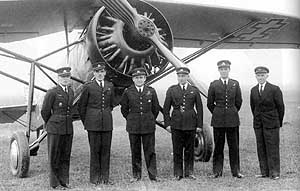| ANBO V | |
|---|---|
 ANBO - 51 | |
| General information | |
| Type | Military trainer |
| Manufacturer | Karo Aviacijos Tiekimo Skyrius |
| Designer | |
| Number built | 5 (Anbo V) 10 (Anbo 51) |
| History | |
| First flight | 1931 |
The ANBO V was a parasol wing monoplane training aircraft designed for the Lithuanian Army in 1931. A developed version, the ANBO 51 followed in 1936 and 1938.